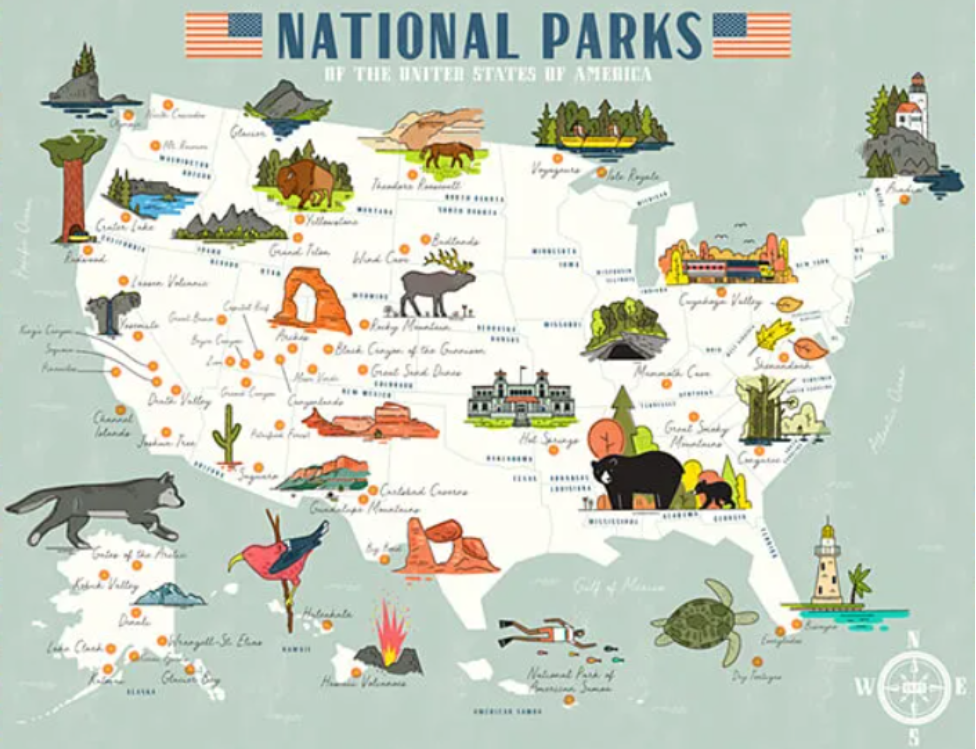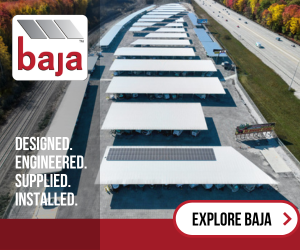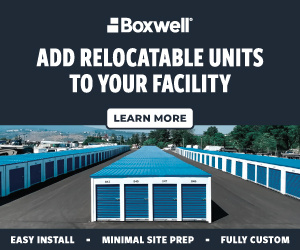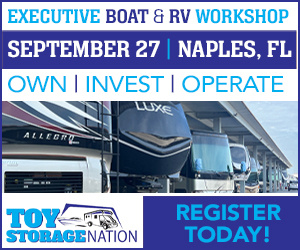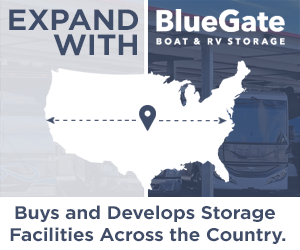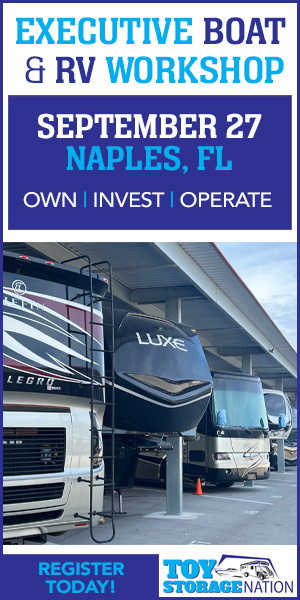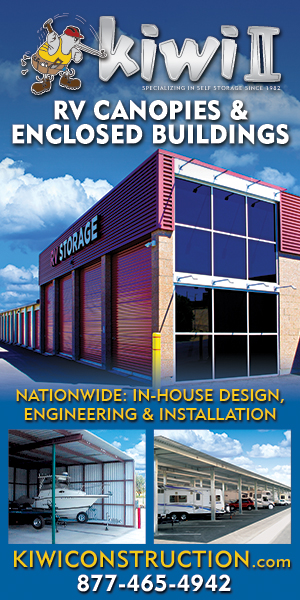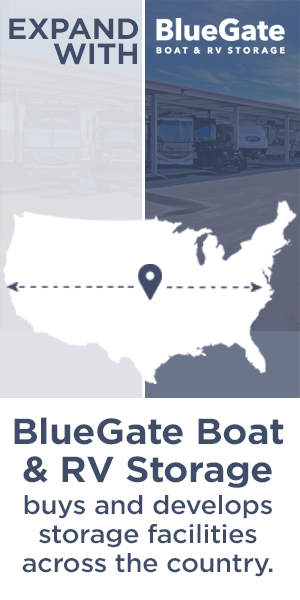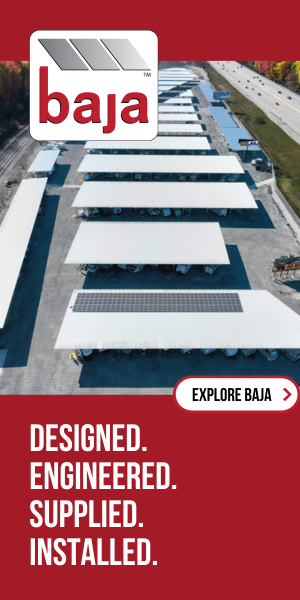Part One: Why Class A storage facilities are predicted to be the No. 1 choice for American’s storing their prized RV and boat possessions.
Our amazing country is blessed with 423 national parks, monuments and nationally protected lands comprising the National Park Service system. These national and natural treasures attract millions every year to enjoy their magnificent beauty and vibrant wildlife, taking it in while driving, hiking, camping, fishing and just plain sitting around. These hundreds of attractions are relatively few compared to the countless other landscapes that motivate people to break out of their mundane work lives to rest or play within our bountiful lakes, rivers, streams, mountains, hills, beaches, gorges, buttes and wide open ranges.
With more people than ever gravitating to the great outdoors for adventures, exploration and peace of mind, the future for RV and boat storage is looking extremely optimistic. This forecast is derived from a recent report—the U.S. Bureau of Economic Analysis—released in November 2022. The report examines trends in outdoor recreation across the United States, especially for purposes of determining how much this sector contributes to the nation’s gross domestic product.
The report uses a wide definition for “outdoor recreation,” including some activities as simple as gardening and attending outdoor concerts, but conventional activities of boating, hiking and camping take a much higher precedence. As most of us have already learned, COVID-19 inspired throngs of people to venture out to wide-open spaces and experience firsthand the rewards of communing in nature.
For smart investors or developers eyeing this industry, meeting the needs of outdoor recreation enthusiasts can bring its own rewards. With a high-quality Class A toy storage facility, you can act as a conduit for recreationalists, elevating their overall experience of picking up and dropping off their prized possessions in a streamlined process, while ensuring their toys are safe and secure in between excursions.
For you the rewards are twofold: In addition to the joy of helping others achieve bliss, you can be smiling all the way to the bank, operating what many are saying is one of the best real estate niches to ever exist!
The evolution of storage
Jim Chiswell is a self-storage industry guru of 40 years who has worked with hundreds of developers, operators and managers as an expert consultant, guiding them through best practices for project feasibility, acquisition due diligence and management training. In an article written earlier this year, Chiswell compared today’s RV and boat storage industry to the early years of self-storage, when mini warehouse establishments began to take root, and then, over the years, these warehouses were transformed into specialized storage facilities that offer customers the greatest conveniences and security options.
Similarly, “RV and boat storage started as owners and managers doing friends favors by letting them park their vehicles and boat trailers in open areas around the facility,” says Chiswell. “That slowly evolved to actually planning for 10 or 15 outside parking spaces to turn vacant land into a profit center. Now across the country, the race is on to develop standalone RV and boat complexes.”
Knowing manufacturers continue producing and selling higher numbers of RVs and boats, Chiswell says the growth “is ushering in a coming boom in RV and boat storage needs from coast-to-coast. I expect to see a jump in standalone facility growth, together with an increased emphasis to include significant portions of land at new self-storage complexes for RV and boat parking. It is not just simple outside parking, but covered as well as fully enclosed spaces that will boom in this decade.”
Introducing Class A storage
Chiswell’s example summarizes the progression seen in the market—from simple, basic RV and boat storage parking lots toward more sophisticated facilities to meet the needs of today’s recreational vehicle owners.
Terry Anderson, president of Tenant Property Insurance, who also serves as president of Toy Storage Nation’s Advisory Board, explains it this way: “The RV and boats bought and stored by this community of owners are usually the second or third highest-priced asset that this tenant owns. These owners will ‘baby’ and provide extra care for these recreational and amusement toys because these assets have provided the most incredible escape since the creation of big-screen TVs!”
In other words, owners of precious, high-ticket RVs and boats are more likely to seek out a facility that features higher levels of comfort, convenience, security and automation. They’ll be more likely to drive by a dirt parking lot surrounded with a flimsy fence, posing as a vehicle storage center, and head toward an RV and boat storage facility with paved driveways and units, secure fencing, automated gates and canopies overhead to keep their toys sheltered from the harsh elements.
In a nutshell, Class A facilities have four key elements to appeal to this market as it grows in sophistication:
- Paved or concrete driveways and parking units,
- Secure perimeter fencing,
- Automated gate at the entry/exit point, and
- Fully enclosed units or canopy-covered parking.
All four must be included to be considered a Class A facility. Going a step beyond is Class A+, in which a facility is completely automated with touchless technology that allows tenants to enter the gate and/or their unit through a phone app.
Some in the industry have slightly varying definitions of Class A storage, based on the location of the facility and the climate in which it exists. For example, Devin Beasley, executive director of capital markets in Cushman Wakefield’s Self-Storage Advisory Group inserts a twist of logic in his explanation.
“The benefits of Class-A are really dependent on that particular market and what is driving the need for RV and boat in that location. In my opinion, if you’re building or purchasing in an environment where the fluctuations in weather dictate that you need fully enclosed, heated units, then I would consider that Class A for that market,” Beasley says. “However, if you’re in a sunbelt state where canopies combined with high-class amenities are sought after from the tenant base, then we could consider that Class A for that market as well.”
Facility operators and owners of Class A storage who desire to go the extra mile to retain customers, as well as collect premium rents, may also include an array of ancillary services such as free water and dump stations, ice machines, wash and dry station, charging outlets, restrooms and showers, and a lobby waiting area with coffee and wifi service.
Part two of the United States of Recreation series delves into the benefits of operating a Class A facility. Part three examines the evidence that the market will continue to expand, with plenty of opportunity for new development to fill a growing void for proper RV and boat storage.









